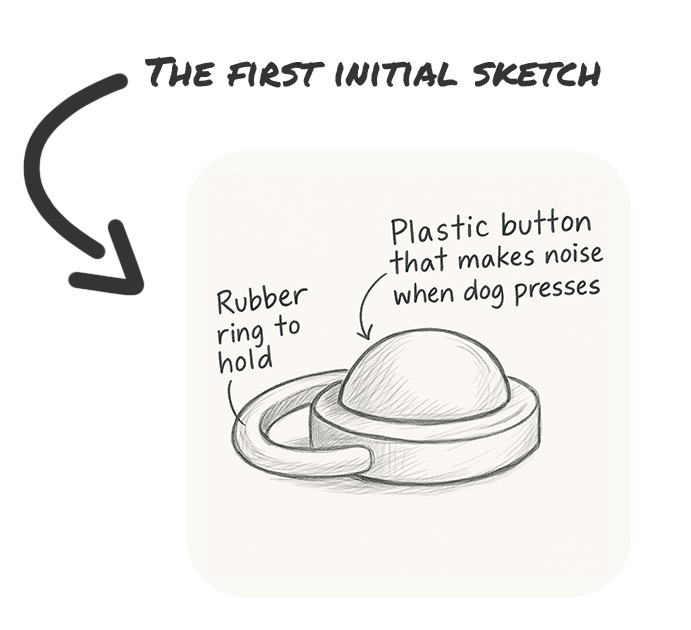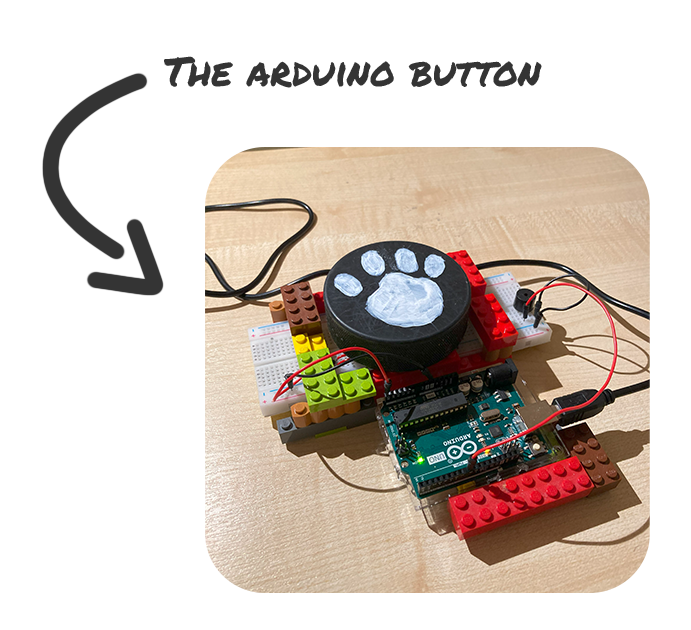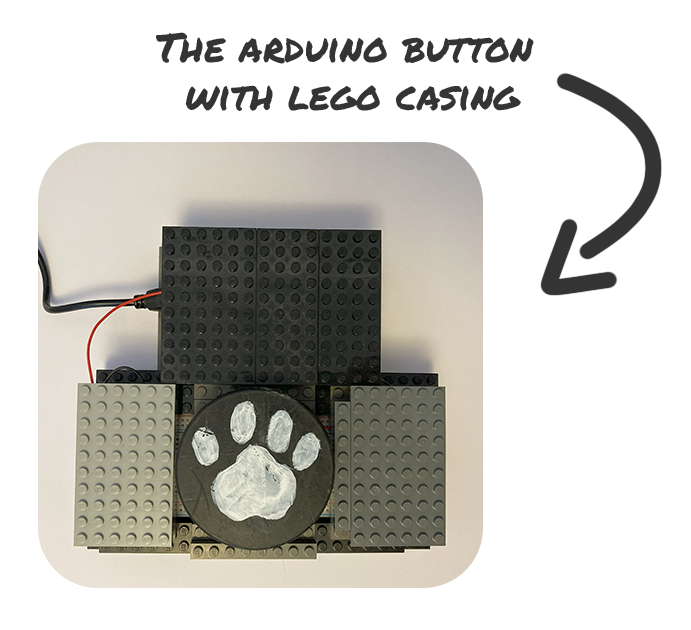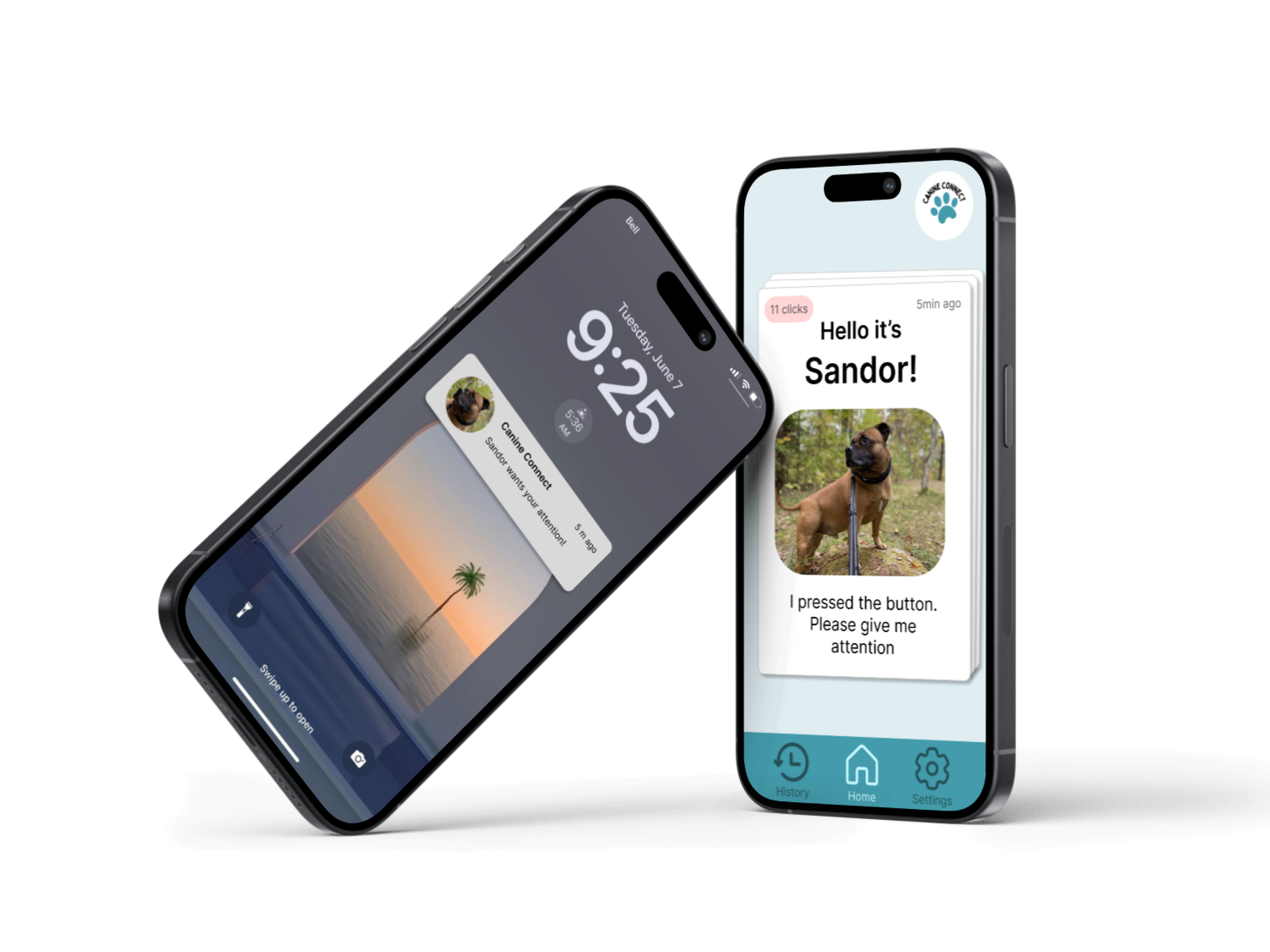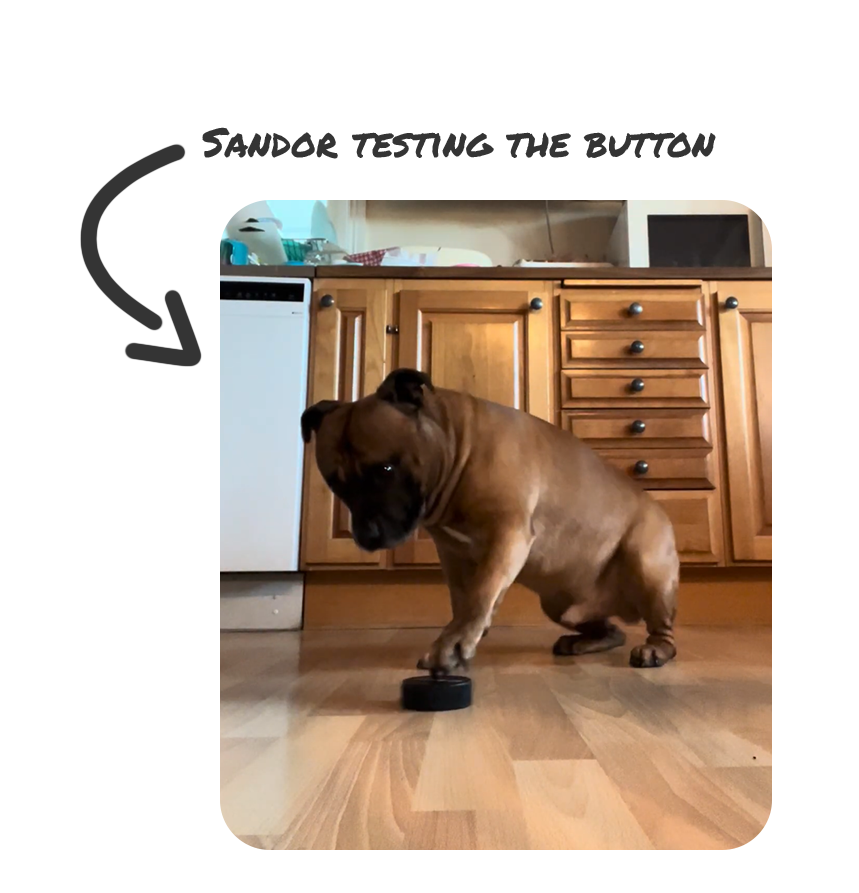Canine Connect
Canine Connect is an Animal-Computer Interaction (ACI) project that helps dogs get their owner’s attention using a paw-activated button paired with a mobile notification system.
Role: UX Designer - Led behavioral research, interaction analysis, and built the physical prototype. Co-designed the digital prototype in a 4-person team.
Methods & Frameworks: Behavioral Observation • Conversation Analysis • Prototyping • Iterative Testing • Design Thinking • ISO Standards
Background
As part of my studies, I explored how technology could support clearer communication between dogs and their owners through an Animal-Computer Interaction (ACI) project. Dogs often use subtle cues like eye contact, pawing, or proximity, that owners may overlook, leading to frustration or unmet needs. This project aimed to better understand those behaviors and design a solution grounded in real interactions.
Challenge
How might we design a way for dogs to request attention that is:
Intuitive for dogs to learn
Clearly noticeable for owners
Grounded in observed behavior, not assumptions
Research
User Group

Sandor
A calm, independent male. Uses subtle, quiet cues to communicate like eye contact.
I conducted observations with two dogs of contrasting temperaments and communication styles. This diversity helped me identify shared communication challenges across different personality types, as recommended by ISO standards. See the two dogs below:

Nellie
A social, energetic female. Communicates with pawing, movement and eye contact.
Key Findings
Dogs often rely on subtle cues easily missed by humans.
Barking was often ignored, physical proximity was more common.
Owners often misread or missed subtle signals.
Pawing and nudging were reliable behaviors to build on.
To interpret these patterns, I applied:
Conversation Analysis and Ethnomethodology to analyze video footage.
Observations in both home and public environments
ISO standards and Design Thinking for inclusive, behavior-based design.
Based on the observations, behavioral analysis, and early concept testing, we defined key user requirements to guide our design decisions. These helped ensure the interaction would be intuitive for the dogs, accessible for the owners, and grounded in real behavior.
Ideation & Prototyping
Ideation Process
We began with individual brainstorming followed by group discussions and dot voting. I contributed concept sketches and helped guide selection toward a single interaction model:
A physical button that dogs can press using natural behaviors like pawing.
Prototyping
Lo-fi Prototype
Sketches helped me explore form, size, and material. The first initial sketch of the product was “carryable“, and had a rounded plastic button. After further analysis however, we excluded the “carryable” idea, and focused instead on one clear interaction due to scope and time constraints, and the rounded button was flattened on top to increase usability for pushing.
I used a hockey puck as an initial stand-in: it was paw-sized, durable, and had the desired shape.
Physical Prototype
I built an Arduino-powered button using:
A hockey puck as the physical interface (paw-sized, durable)
Lego casing to protect the electronics and allow for modular iterations
Sound feedback to confirm activation
Digital Prototype
I created a simple Figma-based app simulation to demonstrate how a button press would trigger a mobile notification for the owner. This let us test and visualize the full interaction without complex backend integration.
Testing
We conducted multiple iterative test sessions with Sandor and Nellie over several days. The goal was to determine whether dogs could learn to use the button intentionally to gain attention.
Training Approach
We trained both dogs using positive reinforcement:
Started by associating button-pressing with the “give paw” cue.
Gradually moved from guided interaction to independent use.
Reinforcement shifted from treats to attention.
Iterative Improvements
Throughout testing, I made iterative changes to support learning and usability:
Surface friction: The puck initially slid too much, distracting the dogs, so I added a Wettex mat. Based on this, future versions should include rubber grip material.
Sound feedback: I tested versions with and without sound. The dogs used the sound cue as a signal that the action worked, which reinforced learning and limited random pressing.
Context awareness: I began training in focused one-on-one sessions and gradually shifted to more natural settings, such as when the owner was occupied. This helped the dogs generalize the interaction and use the button more intentionally.
Results
Both dogs successfully learned the button-pressing behavior and used it to gain attention. Testing showed that the concept is not only learnable but also adaptable across different home environments. These sessions provided meaningful insight into how animals interact with tangible interfaces and what feedback mechanisms support effective learning.
Outcome
Both dogs were able to learn and apply the button-pressing behavior to gain attention. See the video where Nellie uses the Arduino-powered button to get my attention!
This validated:
That dogs can interact with physical and technological interfaces.
That reinforcement feedback (sound) supports learning.
That design can translate non-human behavior into actionable interaction.
The result was a working proof of concept, a physical-digital communication tool grounded in real user behavior.
What Did I Learn?
Designing Beyond Humans
Working with non-verbal users taught me to shift from verbal feedback to interpreting body language and subtle behaviors. It pushed me to think beyond conventional UX patterns.
The Value of Iteration
Small adjustments like reducing slippage or adding sound had a big impact on usability and learning. Iteration was essential not only for the design, but for shaping how the dogs engaged with the product.
Grounding Decisions in Behavior
Ethnomethodology and Conversation Analysis helped me ground every design decision in observed behavior. This ensured the solution was intuitive, usable, and respectful of the animal users.
Personal Reflection
This project pushed me to adapt my design mindset. It made me more observant and reminded me that user-centered design isn't just about listening. Sometimes it’s about watching quietly, noticing patterns, and building from the ground up.





